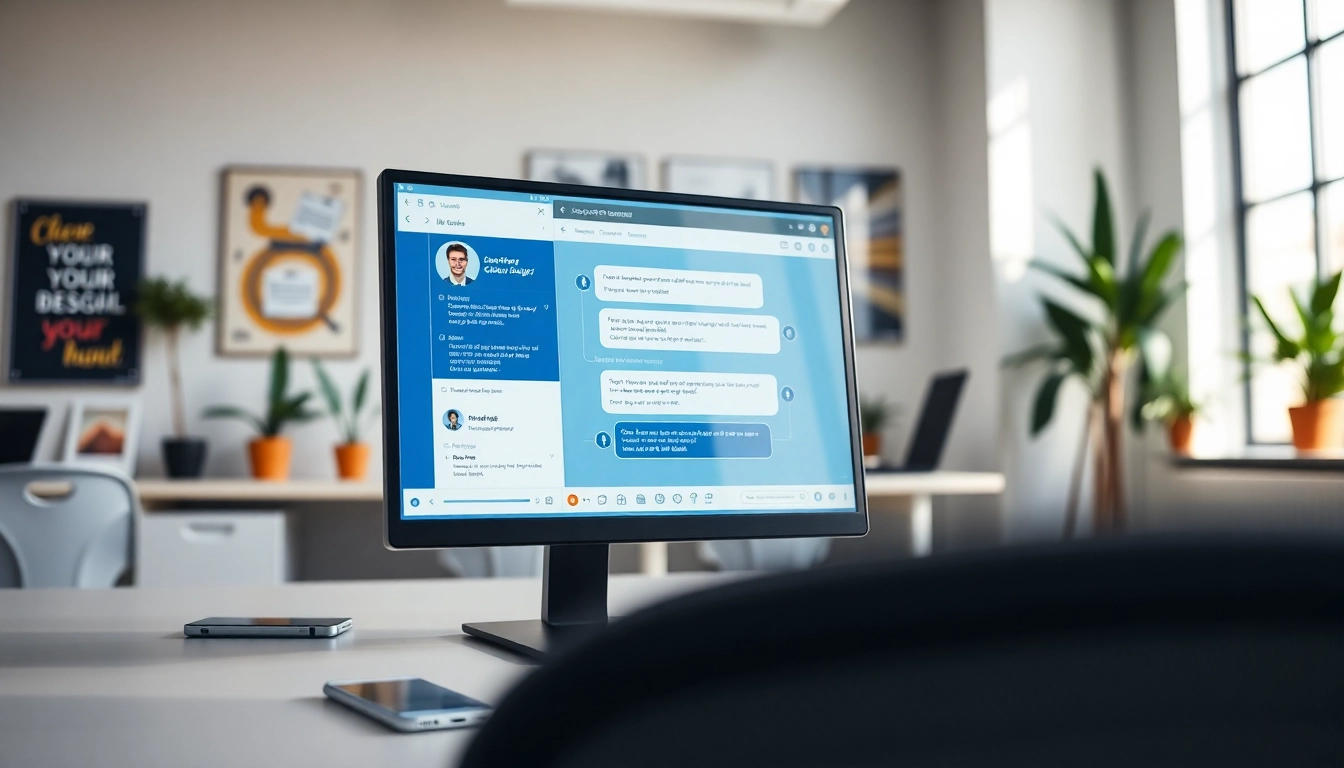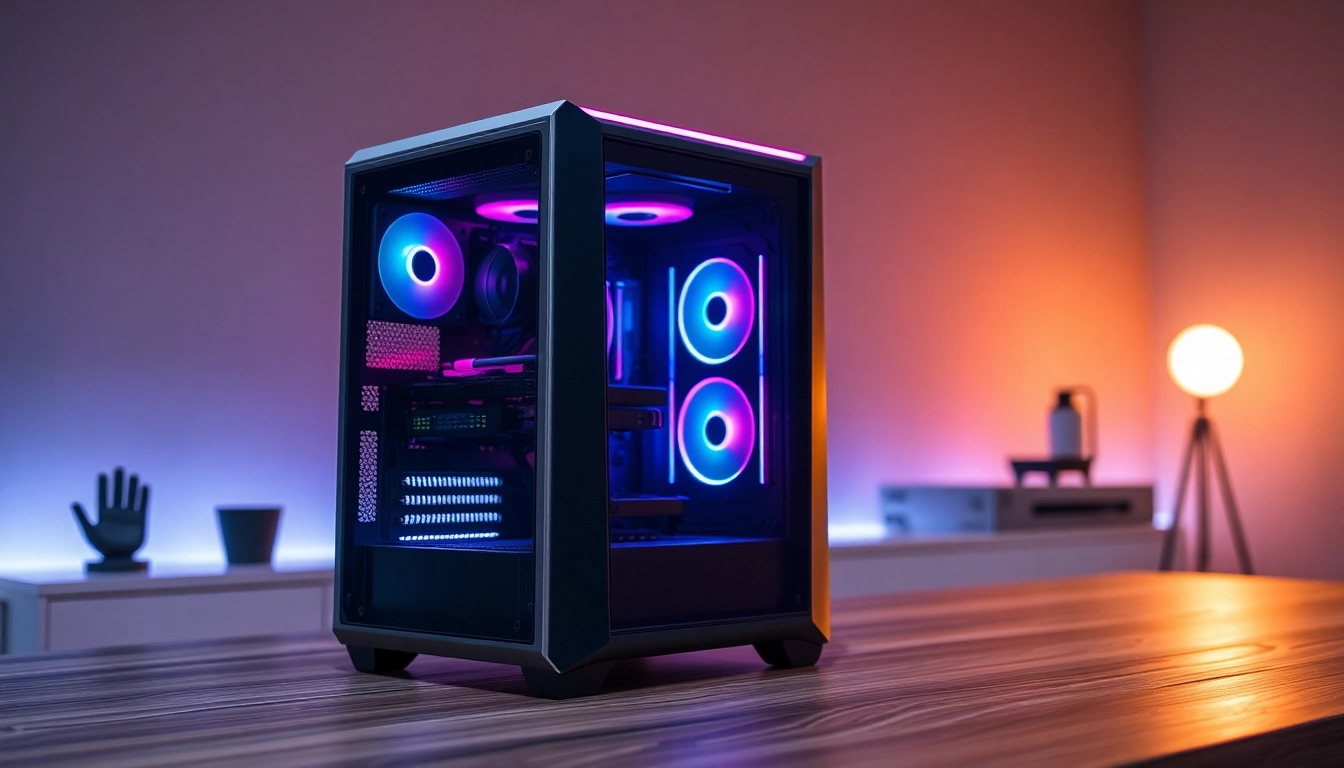Understanding ChatGPT Chatbots
What is a ChatGPT Chatbot?
A chatgpt chatbot is an advanced conversational agent powered by OpenAI’s ChatGPT technology. These chatbots leverage natural language processing (NLP) to understand and respond to user inquiries in a human-like manner. By utilizing deep learning techniques, ChatGPT chatbots can generate responses based on context, making them highly adaptable to various applications, from customer service to personal assistance. Unlike traditional rule-based chatbots, ChatGPT chatbots can handle open-ended questions and maintain context over extended interactions.
Key Features of ChatGPT Chatbots
ChatGPT chatbots come equipped with several features that enhance their usability and effectiveness:
- Natural Language Understanding: These chatbots are designed to process and understand the nuances of human language, enabling them to interpret users’ intent accurately.
- Contextual Awareness: They can remember previous interactions, which allows for coherent and relevant responses, enhancing the overall user experience.
- Customizability: Businesses can tailor the chatbot’s personality, tone, and response style to reflect their brand identity.
- Multilingual Support: ChatGPT chatbots can support multiple languages, making them accessible to a wider audience globally.
- Integration Capabilities: Businesses can easily integrate these chatbots into various platforms, such as websites, social media, and messaging apps, streamlining user interactions across channels.
How ChatGPT Chatbots Work
ChatGPT chatbots operate based on a series of steps that involve training, input processing, and response generation:
- Training the Model: The chatbot is pre-trained on a diverse corpus of text from the internet, which helps it learn linguistic patterns, grammar, and factual information.
- Input Processing: When a user enters a message, the chatbot processes this input using NLP techniques to understand the intent and context.
- Generating a Response: After processing the input, the chatbot generates a response by predicting the most likely continuations, ensuring that the answer is contextually appropriate and coherent.
- Feedback Loop: Learning does not stop at deployment. Feedback from user interactions helps refine and improve the chatbot’s performance over time.
Benefits of Integrating ChatGPT Chatbots
Enhancing Customer Engagement
One of the most significant advantages of ChatGPT chatbots is their ability to enhance customer engagement. By providing immediate responses to inquiries, these chatbots can help maintain user interest and satisfaction:
- 24/7 Availability: Unlike human agents, chatbots can operate around the clock, providing instant responses regardless of the time of day.
- Personal Recognition: ChatGPT chatbots can recognize returning users and provide personalized responses based on previous interactions, thus enhancing customer loyalty.
Streamlining Business Processes
Implementing ChatGPT chatbots can lead to significant improvements in business efficiency:
- Automating Routine Tasks: Chatbots can handle repetitive tasks like booking appointments, providing product information, and answering FAQs, allowing human staff to focus on higher-value activities.
- Consistent Interactions: These chatbots ensure a uniform customer experience by providing consistent answers to frequently asked questions, minimizing confusion.
Reducing Operational Costs
Integrating ChatGPT chatbots can lead to a more cost-effective business model:
- Lower Staffing Costs: By handling a significant volume of inquiries, chatbots can reduce the need for a large customer service team, resulting in lower payroll expenses.
- Fewer Errors: Chatbots can minimize human errors in order processing and customer communications, ultimately saving costs related to complaint resolution and refunds.
Implementing a ChatGPT Chatbot in Your Business
Choosing the Right Platform
When implementing a ChatGPT chatbot, selecting the right platform is crucial. Here are some considerations:
- Integration: Ensure that the platform supports easy integration with your existing systems, such as CRM tools and communication channels.
- User Interface: Look for user-friendly interfaces that facilitate straightforward management and monitoring of chatbot interactions.
- Scalability: Choose a platform that can grow with your business needs and handle increased volumes of interactions during peak times.
Customizing Your ChatGPT Chatbot
To maximize the effectiveness of your chatbot, customization is key:
- Define Brand Personality: Customize the tone and manner of interactions to align with your brand voice, whether it’s formal, casual, friendly, or technical.
- Create Comprehensive FAQs: Provide the chatbot with thorough FAQs to ensure it can respond accurately to common inquiries.
- Utilize Visual Elements: Integrate images or quick responses to make interactions more engaging and informative.
Training Your Chatbot for Optimal Performance
Training your ChatGPT chatbot properly is crucial for its effectiveness:
- Use Diverse Datasets: Train the chatbot on a wide range of conversation scenarios to improve its adaptability.
- Continuous Improvement: Regularly update the dataset based on user interactions and feedback to refine responses over time.
Measuring the Performance of Your ChatGPT Chatbot
Setting Key Performance Indicators (KPIs)
To evaluate the success of your ChatGPT chatbot, it’s essential to establish relevant KPIs:
- User Satisfaction Scores: Measure customer satisfaction through surveys or direct feedback after interactions.
- Response Time: Monitor the average response time to user inquiries to ensure prompt engagement.
- Resolution Rates: Assess the rate at which inquiries are successfully resolved by the chatbot without human intervention.
Analyzing User Interactions
Understanding how users interact with your chatbot can provide valuable insights:
- Common Questions: Identify frequently asked questions to improve FAQ content and training data.
- Usage Patterns: Analyze peak chat times and user demographics to tailor your chatbot’s strategies accordingly.
Improving Chatbot Responses Based on Feedback
Use feedback effectively to enhance your ChatGPT chatbot:
- Implement User Feedback: Encourage users to share their experiences, and utilize this feedback to tweak the chatbot’s responses and operations.
- A/B Testing: Conduct tests with different response styles or formats to determine what resonates most effectively with users.
Future Trends in ChatGPT Chatbots
Advancements in AI Technology
The field of AI is constantly evolving, and ChatGPT chatbots are at the forefront of these advancements:
- Increased Emotion Recognition: Future chatbots may be able to detect and respond to users’ emotional states, allowing for more empathetic interactions.
- Enhanced Contextual Understanding: Continued improvements in NLP will likely allow chatbots to understand context more deeply, further blurring the lines between human and machine interaction.
Personalization Trends in Chatbots
As customer expectations evolve, personalization will become even more crucial:
- Adaptive Learning: Chatbots may employ adaptive learning techniques to improve personalization based on user behavior, preferences, and historical interactions.
- Cohesive Omnichannel Engagement: Users will likely expect a seamless experience across various platforms, prompting chatbots to retain information and context across different touchpoints.
The Role of ChatGPT Chatbots in E-commerce
As e-commerce grows, the application of ChatGPT chatbots will expand significantly:
- Product Recommendations: Chatbots can assist users in discovering products based on their preferences and previous interactions, ultimately boosting sales.
- Streamlined Checkout Process: These chatbots can facilitate a smoother checkout experience by answering questions in real-time and providing assistance.



